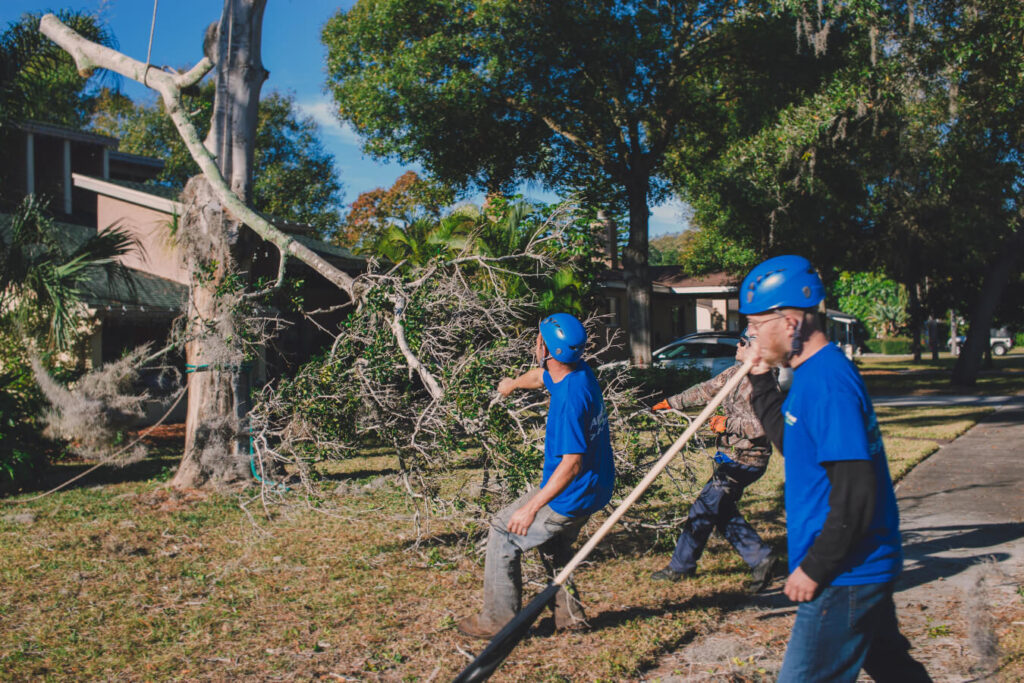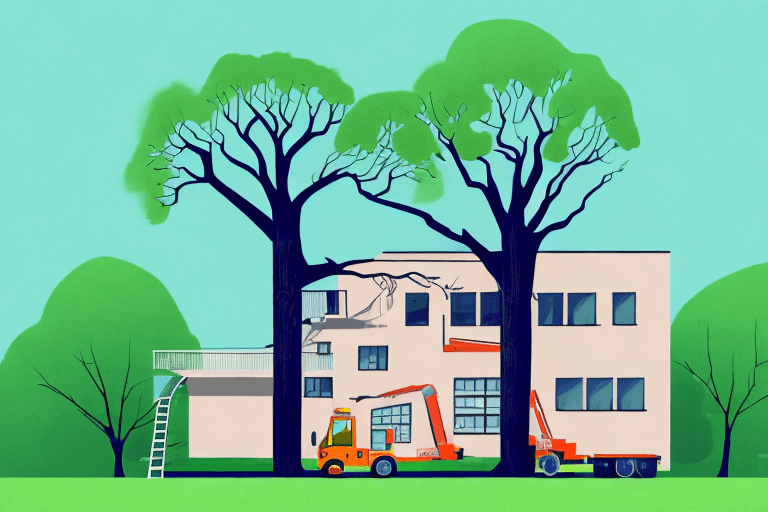The Blue Mountains, with their breathtaking landscapes and diverse ecosystems, are a treasure worth preserving. However, in some cases, tree removal becomes a necessity to maintain the delicate balance of the natural environment. Understanding the importance of tree removal in this context is crucial to ensure both the safety of individuals and the health of the ecosystem.
Understanding the Importance of Tree Removal
When it comes to tree removal Blue Mountains, there are two key factors at play: ecosystem health and safety. Balancing these aspects is essential in order to achieve summit success in the Blue Mountains.
Balancing Ecosystem Health and Safety
Tree removal plays a vital role in maintaining the overall health of the ecosystem in the Blue Mountains. As trees age and become structurally compromised, they can pose a threat to both human life and surrounding flora and fauna. Identifying these trees for removal is necessary to eliminate potential risks and allow for new growth.
One important aspect to consider when balancing ecosystem health and safety is the impact of invasive species. Invasive species can quickly spread and outcompete native plants, disrupting the delicate balance of the ecosystem. Tree removal can help control the spread of these invasive species, allowing native plants to thrive and maintain a healthy ecosystem.
Furthermore, tree removal can also help prevent the spread of diseases and pests. Some trees may become infected with harmful pathogens or infested with destructive insects. Removing these trees can prevent the further spread of diseases and pests, protecting the overall health of the ecosystem.
See Also: Tree Removal in the Inner West

The Role of Tree Removal in Forest Management
Forest management involves maintaining the biodiversity and overall health of the ecosystem. Removing certain trees helps to optimize the health and growth of the remaining vegetation. By creating space for sunlight and reducing competition for resources, tree removal contributes to the long-term sustainability of the forest.
In addition to optimizing sunlight and resources, tree removal can also improve the habitat for wildlife. Some tree species may not provide suitable habitats for certain animals, while others may be preferred nesting sites. By selectively removing trees, forest managers can create a more diverse and balanced habitat, supporting a wider range of wildlife species.
Another important aspect of forest management is fire prevention. In fire-prone areas like the Blue Mountains, removing dead or dying trees can help reduce the risk of wildfires. Dead trees are highly flammable and can easily ignite, spreading the fire rapidly. By removing these trees, forest managers can create firebreaks and minimize the potential for devastating wildfires.
Furthermore, tree removal can also have economic benefits. In some cases, the harvested trees can be used for timber or other wood products, providing a valuable resource for local industries. This sustainable approach to tree removal ensures that the forest continues to contribute to the local economy while being managed responsibly.
The Process of Tree Removal in the Blue Mountains
Tree removal in the Blue Mountains is a meticulous process that requires careful planning and execution. It involves identifying trees for removal, as well as implementing appropriate techniques and tools to ensure safety and minimize environmental impact.
Identifying Trees for Removal
Tree experts play a crucial role in identifying trees that need to be removed. They assess the structural condition, health, and overall risk associated with each tree. This assessment allows for the identification of priority trees that pose the greatest dangers or have the highest potential for providing the greatest benefits when removed.
When identifying trees for removal, experts take into consideration various factors such as the tree’s proximity to buildings, power lines, and other structures. They also consider the tree’s health and whether it is diseased, damaged, or dying. Additionally, they evaluate the tree’s root system and its potential to cause damage to underground utilities or structures.
Furthermore, tree experts consider the species of the tree and its impact on the surrounding ecosystem. Invasive species or trees that are crowding out native vegetation may be prioritized for removal to restore the balance of the local ecosystem.
Techniques and Tools for Safe Tree Removal
Safe tree removal techniques and tools are essential to minimize risks and ensure that the removal process is carried out efficiently. Techniques such as rigging and roping are utilized to control the direction of falling trees and prevent damage to surrounding structures.
Before the actual removal process begins, the tree removal team carefully plans the operation. They assess the area around the tree to determine the best approach for removal, taking into account any obstacles or potential hazards. This planning process ensures that the removal is carried out safely and efficiently.
Once the planning is complete, the tree removal team uses specialized equipment and tools to safely dismantle the tree. Chainsaws are commonly used to cut the tree into manageable sections, which can then be lowered to the ground using ropes and rigging systems. This method allows for precise control over the direction of the tree’s fall and minimizes the risk of damage to nearby structures or vegetation.
Throughout the tree removal process, the safety of the workers involved is of utmost importance. They wear protective gear, including helmets, gloves, and safety harnesses, to protect themselves from falling debris and other hazards. The team also follows strict safety protocols to ensure that the removal is carried out without any accidents or injuries.
After the tree has been safely removed, the tree removal team takes steps to minimize the environmental impact of the operation. This may include chipping the tree branches and trunk into mulch, which can be used for landscaping or other purposes. Additionally, any remaining debris is carefully collected and disposed of in an environmentally responsible manner.
Challenges Faced in Mountainous Tree Removal
Removing trees in mountainous terrain presents unique challenges that require expertise and careful planning. Navigating difficult terrain and dealing with unpredictable weather conditions are significant factors that need to be considered to ensure the success and safety of the tree removal process.
Navigating Difficult Terrain
The steep and irregular terrain of the Blue Mountains adds complexity to the tree removal process. Specialized equipment and techniques are employed to access and operate in these challenging areas. Steps are taken to minimize soil erosion and protect the integrity of the landscape during the removal process.
When it comes to removing trees in mountainous regions, the terrain poses a formidable obstacle. The slopes and uneven ground of the Blue Mountains make it difficult for workers to maneuver and access the trees that need to be removed. To overcome this challenge, arborists and tree removal experts utilize specialized equipment and techniques specifically designed for mountainous terrain.

One such technique is the use of ropes and harnesses to safely reach and remove trees on steep slopes. Arborists trained in rope access techniques can skillfully navigate the treacherous terrain, ensuring their safety while efficiently removing trees. Additionally, specialized machinery, such as tracked vehicles and cranes, are utilized to transport equipment and safely remove trees in hard-to-reach areas.
Furthermore, the removal process takes into account the preservation of the landscape’s integrity. Steps are taken to minimize soil erosion, such as strategically placing erosion control measures like geotextiles and retaining walls. These measures help stabilize the soil and prevent erosion, ensuring that the mountainous terrain remains intact even after the tree removal process.
Weather Conditions and Their Impact
The weather plays a significant role in tree removal operations. Wind, rain, and extreme temperatures can impact the safety and efficiency of the removal process. Adherence to strict safety protocols and an awareness of weather conditions are crucial to ensure that workers and the environment remain protected during tree removal activities.
Mountainous regions are known for their unpredictable weather patterns, which can pose challenges during tree removal operations. Strong winds can make it unsafe for workers to operate at heights, while heavy rain can create slippery conditions, increasing the risk of accidents. Extreme temperatures, whether scorching heat or freezing cold, can also affect the performance of equipment and the well-being of workers.
To mitigate these weather-related challenges, tree removal teams closely monitor weather forecasts and plan their operations accordingly. They prioritize safety above all else, rescheduling or adjusting their work to avoid hazardous weather conditions. Additionally, workers are equipped with appropriate personal protective equipment (PPE) to ensure their safety and comfort in varying weather conditions.
Moreover, the impact of weather conditions on the environment is also taken into consideration. Tree removal activities are carefully planned to minimize any potential harm to the surrounding ecosystem. For example, during periods of heavy rain, measures are taken to prevent soil erosion and sediment runoff into nearby water bodies, preserving the water quality and protecting aquatic life.
In conclusion, removing trees in mountainous terrain requires expertise, careful planning, and the ability to navigate difficult terrain and unpredictable weather conditions. The use of specialized equipment and techniques, along with strict adherence to safety protocols, ensures the success and safety of tree removal operations while minimizing the impact on the environment.

The Impact of Tree Removal on the Blue Mountains
Although tree removal is necessary in certain circumstances, it inevitably brings about changes to the local landscape and wildlife habitats. Understanding and mitigating the effects of tree removal is essential to preserve the delicate balance of the Blue Mountains ecosystem.
Changes in the Local Landscape
Tree removal alters the aesthetics and structure of the local landscape. The removal of trees can impact views, open up new vistas, and even affect the microclimate of an area. It is important to strike a balance between the removal of hazardous trees and the preservation of the scenic beauty that the Blue Mountains are known for.
Effects on Wildlife Habitats
As trees are removed, habitats and nesting sites for various wildlife species can be affected. It is important to assess the potential impact of tree removal on local wildlife populations and implement strategies to minimize disruption. This may involve providing alternative habitats or replanting native tree species to maintain biodiversity.
Future Perspectives on Tree Removal in the Blue Mountains
The field of tree removal is constantly evolving, with innovative methods and technologies being developed to improve efficiency and minimize environmental impact. Additionally, policies and regulations play a crucial role in managing and guiding tree removal activities in the Blue Mountains.
Innovations in Tree Removal Methods
Ongoing research and technological advancements continue to revolutionize tree removal practices. New equipment and techniques, such as aerial tree removal, are being developed to safely and efficiently remove trees in challenging environments. These innovations aim to enhance worker safety and minimize the impact on surrounding ecosystems.
Policies and Regulations Impacting Tree Removal
Government policies and regulations play a significant role in tree removal activities in the Blue Mountains. These policies ensure that tree removal is carried out in a responsible manner, with consideration given to environmental impacts and the needs of local communities. By adhering to these regulations, tree removal can be conducted in a sustainable and responsible manner.
As we strive for summit success in tree removal operations, it is essential to recognize the importance of balancing the needs of the ecosystem and ensuring the safety of all. By leveraging advancements in techniques and technologies, coupled with careful planning and monitoring, tree removal in the Blue Mountains can continue to contribute to the preservation of this natural treasure for generations to come.
